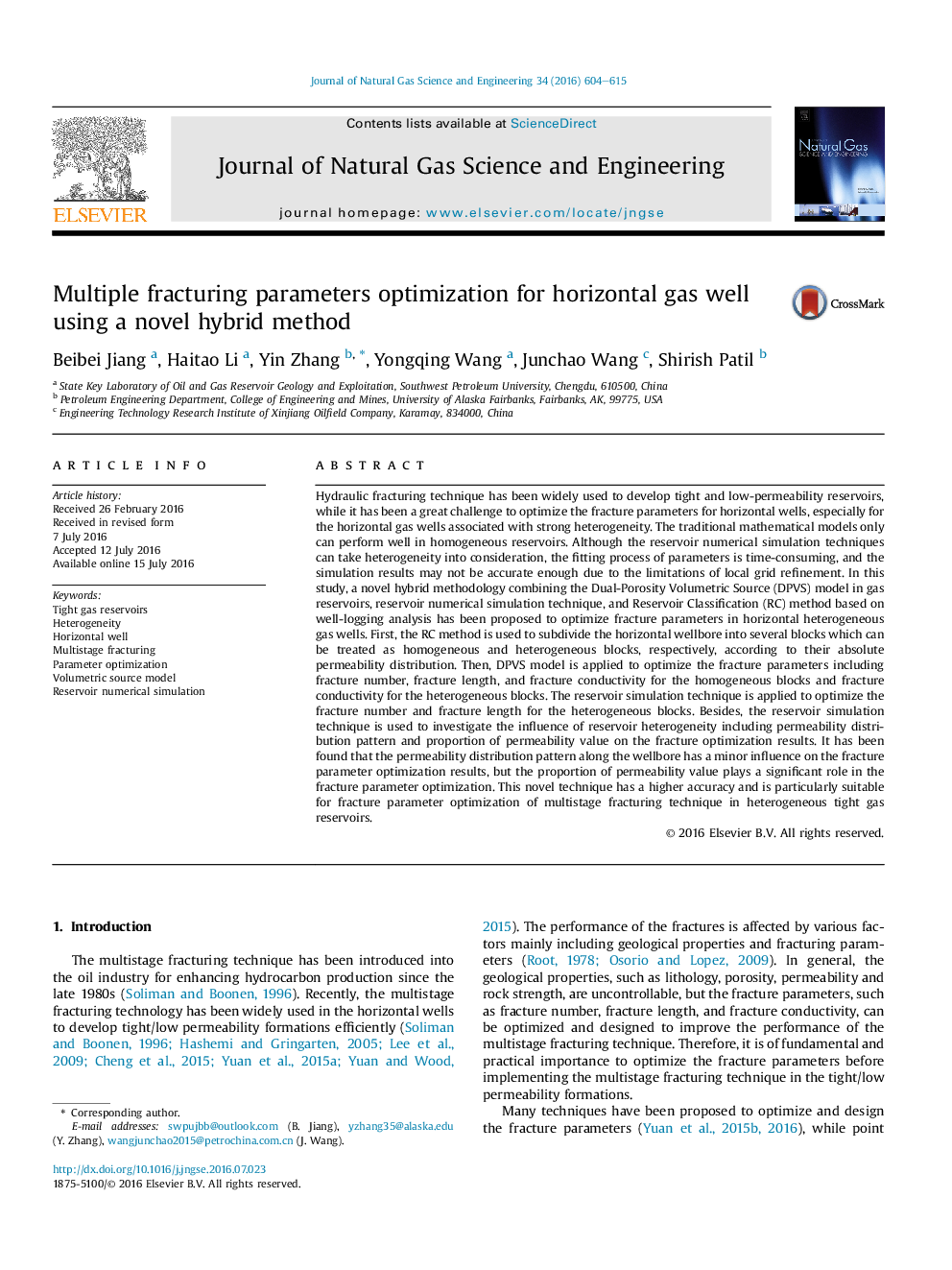| Article ID | Journal | Published Year | Pages | File Type |
|---|---|---|---|---|
| 8128720 | Journal of Natural Gas Science and Engineering | 2016 | 12 Pages |
Abstract
Hydraulic fracturing technique has been widely used to develop tight and low-permeability reservoirs, while it has been a great challenge to optimize the fracture parameters for horizontal wells, especially for the horizontal gas wells associated with strong heterogeneity. The traditional mathematical models only can perform well in homogeneous reservoirs. Although the reservoir numerical simulation techniques can take heterogeneity into consideration, the fitting process of parameters is time-consuming, and the simulation results may not be accurate enough due to the limitations of local grid refinement. In this study, a novel hybrid methodology combining the Dual-Porosity Volumetric Source (DPVS) model in gas reservoirs, reservoir numerical simulation technique, and Reservoir Classification (RC) method based on well-logging analysis has been proposed to optimize fracture parameters in horizontal heterogeneous gas wells. First, the RC method is used to subdivide the horizontal wellbore into several blocks which can be treated as homogeneous and heterogeneous blocks, respectively, according to their absolute permeability distribution. Then, DPVS model is applied to optimize the fracture parameters including fracture number, fracture length, and fracture conductivity for the homogeneous blocks and fracture conductivity for the heterogeneous blocks. The reservoir simulation technique is applied to optimize the fracture number and fracture length for the heterogeneous blocks. Besides, the reservoir simulation technique is used to investigate the influence of reservoir heterogeneity including permeability distribution pattern and proportion of permeability value on the fracture optimization results. It has been found that the permeability distribution pattern along the wellbore has a minor influence on the fracture parameter optimization results, but the proportion of permeability value plays a significant role in the fracture parameter optimization. This novel technique has a higher accuracy and is particularly suitable for fracture parameter optimization of multistage fracturing technique in heterogeneous tight gas reservoirs.
Keywords
Related Topics
Physical Sciences and Engineering
Earth and Planetary Sciences
Earth and Planetary Sciences (General)
Authors
Beibei Jiang, Haitao Li, Yin Zhang, Yongqing Wang, Junchao Wang, Shirish Patil,
